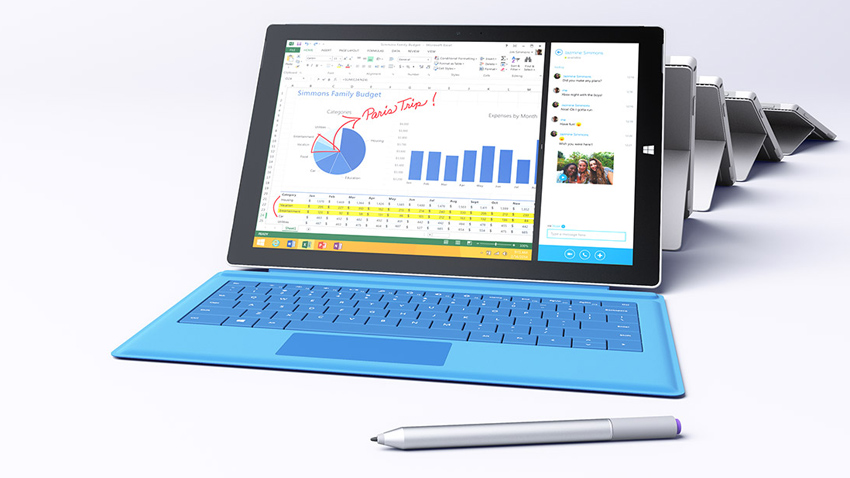Microsoft Surface Pro 3: "the tablet that can replace your laptop"
Could this be the perfect Windows music-making machine?

One of the criticisms that some computer musicians level at the iPad is that its apps don't have the depth or power of their desktop counterparts, and have a toy-like feel to them. What we really need, they say, is a tablet that can run 'proper' music software.
That tablet might just be the Surface Pro 3, which can quickly be turned into a laptop-style device with the optional Surface Pro Type Cover. This was announced by Microsoft yesterday and runs the full-fat version of Windows 8, meaning that it should be able to cope just fine with all the major DAWs and plugins.
Thin and light
Sporting a 12-inch display, this is certainly a svelte machine, being just 9.1mm thin and weighing a trifling 800g. Processor options include Intel's Core i3, i5 and i7, and you can choose to have 64 or 128GB of storage with 4GB RAM, or 256GB or 512GB of capacity with 8GB RAM. Screen resolution is 2160 x 1440 pixels, and a battery life of up to 9 hours is promised.
Other features that Microsoft is keen to shout about include a multi-position kickstand, so you can position your screen at different angles, and the optional Surface Pen. It seems that the company is targeting 'serious' computer users with this release, choosing to compare it with the MacBook Pro rather than the iPad Air on its website.
Surface Pro 3 can be pre-ordered now directly from Microsoft, with prices starting at $799/£639. US customers will be able to get their hands on it from today in Microsoft retail and Best Buy stores, while in the UK, all the models should be shipping by the end of August.
Want all the hottest music and gear news, reviews, deals, features and more, direct to your inbox? Sign up here.



I’m the Deputy Editor of MusicRadar, having worked on the site since its launch in 2007. I previously spent eight years working on our sister magazine, Computer Music. I’ve been playing the piano, gigging in bands and failing to finish tracks at home for more than 30 years, 24 of which I’ve also spent writing about music and the ever-changing technology used to make it.